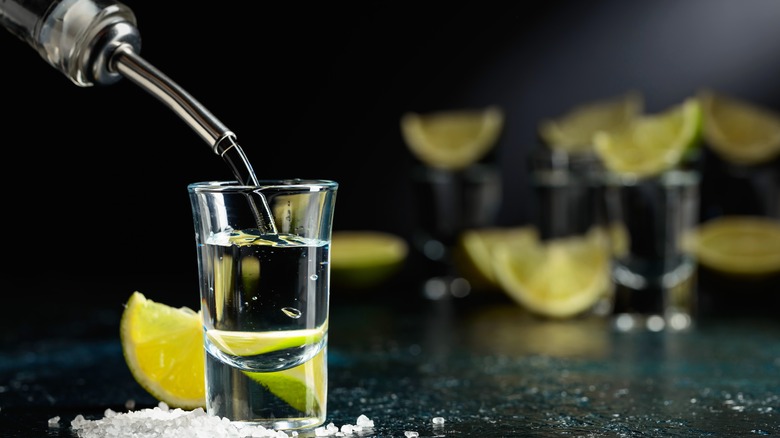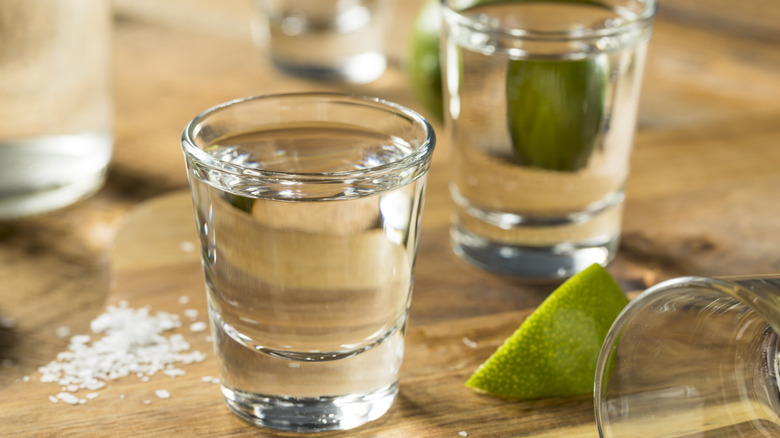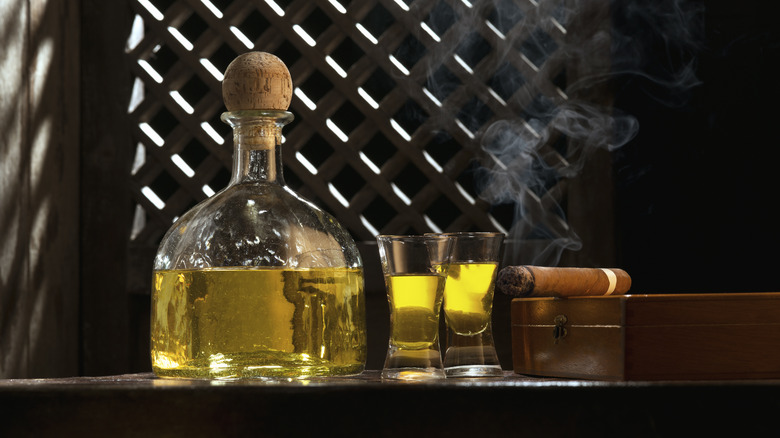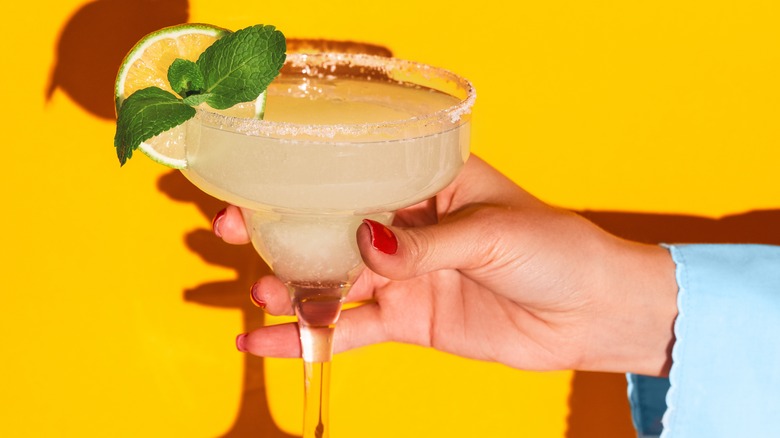How To Order Tequila At The Bar Like A Total Pro
Tequila — the name alone brings out a range of associations. While some may view the liquor as simply a quick shot to down at a bar, the spirit contains a world of complexity. Made from exclusively one species of agave, Agave tequilana Weber, tequila can only be legally produced in Jalisco and a handful of other Mexican states. With over a hundred distilleries, several styles, and regional variations, ordering the spirit can be tricky.
First, order a bottle that's verified to be 100% blue Weber agave. Regulations only mandate that at least 51% of the composition is agave, which means lower-quality bottles will have other additives.
Next, select the desired style, whether it's a high-proof unaged spirit or an easily-sipped aged rendition. With factors like terroir, fermentation, distillation, and aging all affecting the spirit, the range of flavors may be surprising. Let's dive into how to navigate all the variations like a pro.
Order blanco tequila for an intense agave flavor
To best distinguish between varying agave terroirs, opt for blanco expressions. Also called "silver," or "plata," these tequilas have not been aged, so all of the flavor is derived from the agave and the distillation process. Expect a bright, herbal, and sometimes spicy flavor, with a wide variety of further tasting notes between producers. Oftentimes, the palate is accompanied by a strong boozy element — newcomers to drinking liquor neat may find blancos too robust. However, fans of mezcal and sotol will gravitate toward this style. To dive into its impressive range, order a flight, organized by region and producer. Sip neat to distinguish characteristics.
Alternatively, blancos are also the tequila type typically employed in bright cocktails like Palomas and margaritas. When thoughtfully mixed, such drinks are an excellent canvas for showcasing the spirit's nuances. And, for a segue into sipping the spirit on its own, order a ranch water at the bar. There are many excellent blanco tequilas to choose from; but it's hard to beat the beloved, independently-owned Fortaleza brand.
Reposado style smoothens pungency with aging
Technically, blanco tequilas can spend up to 60 days in a barrel; however such young maturations are uncommon. Instead, opt for the reposado expression for a touch of barrel character. By regulation, this style can be rested anywhere from two months to a year. Most frequently, the aging is conducted in American oak barrels or specialized Mexican wood containers called "pipones." However, the barrel constituency is not regulated; so there's a range of other processes, too.
Reposados are a great foray into sipping tequila since they still showcase the agave's characteristics but with a smoothened character. They often contain notes of fruit and a bit of sweetness but still some vegetal characters — the barrel balances agave notes. And the spirit makes for a versatile cocktail base, especially in creative renditions like sours. Just verify that the reposado has no colorants. To enhance this category's appealing golden color, additives are common but detract from the drinking experience. For a sample of an established expression, seek out the reposado from distiller G4.
Añejo tequilas deliver a barrel-influenced spirit
Fans of whiskey and other barrel-aged spirits should opt for añejo tequila. These liquors spend over a year in maturation, the extra time imbuing a golden color and more caramel-like taste. The harsher mineral tones present in blancos are nearly fully diminished, creating a smoothened spirit. However, the result doesn't lack complexity. The best expressions in the style still boast layered flavors with intriguing fruit and spice notes. Like reposados, American oak barrels are usually utilized for aging, which adds notes of wood and vanilla familiar to whiskey drinkers. Oftentimes, producers may age in a succession of varying barrels, adding even greater complexity.
Añejo tequilas are the easiest of the styles to sip neat, but they also don't lose their character when served chilled. Don't hesitate to ask a bartender for the style "on the rocks." For a rendition by a well-reputed distiller, seek out the Cascahuin Extra Añejo Tequila.
How to best serve tequila
Especially for higher-end tequilas, sipping neat is the best way to sample the liquor's full range of aromas. No need to shoot the liquor — although there undoubtedly is a circumstance for such a ritual. Instead, savor a flight, distinguishing the unique notes between each expression. Just cap off to six spirits in one sitting, or else palate fatigue starts to set in.
If the booziness of higher-proof tequilas feels overwhelming, dilute the liquor with a bit of water. Just a few drops will tone down the intensity and elevate the palate. And with aged expressions, it's also acceptable to ask for ice; although the practice is rare with blancos.
Of course, there's also an extensive world of mixed drinks to explore. It's hard to beat a classic Tommy's margarita, which showcases the spirit through a simple assortment of ingredients. Avoid mixed drinks with excessive sugar content like a frozen margarita. While tasty, their sweetness overpowers the agave distillate. For aged tequilas, an agave-based old fashioned is a delightful way to relish the spirit.




